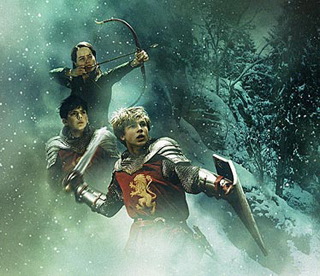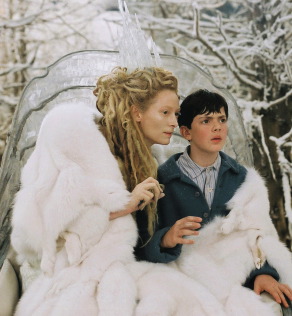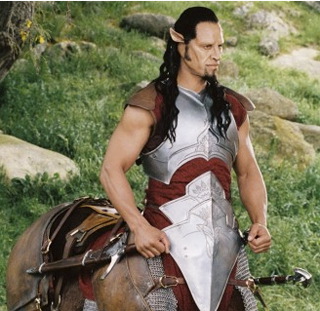The Chonicles of Narnia: The Lion, The Witch and the Wardrobe
12/10/2005 00:49 Filed in: Movies and Television

It's been at least a decade since I read C. S. Lewis' The Lion, the Witch and the Wardrobe (henceforth, LWW). And I hate to confess, that it's the only one in the series I've read. Perhaps it's that lesser time for reading fiction that I mentioned in a blog entry the other day. That also means that having read the book so long ago, I won't be able to tell you in detail how faithful the new movie released today was to the book, or how it strictly compares. However, that's okay because what I can tell you is that the movie thoroughly feels as if it is faithful to the spirit of the C. S. Lewis that I know from his numerous other books I've read. Perhaps this is because Douglas Gresham, the stepson of C. S. Lewis, was given final say on decisions ranging from the script to character and set designs.
The movie is absolutely captivating from beginning to end. Sadly, it's very hard for me to escape into a movie anymore, but I found that a number of times, I felt completely caught up in the events taking place. The movie centers around the adventures of four children, and there were certain points in which I felt like a fifth participant in the film. It takes a lot to pull me into an experience like that. Perhaps that is the beauty of Lewis' storytelling. Yes, this is a children's story, but it speaks to adults as well without resorting to dialogue and innuendo that only adults will pick up on as is done in so many other supposed children's movies today.

I was fascinated with the characters--human and non-human--in LWW. The four principal actors playing the Pevensie children were essentially unknown actors, but they performed their parts believably and remarkably well. Some of the other cast members have more experience, but most will be fairly unfamiliar to audiences outside of England. American movie-goers will recognize Tilda Swinton who plays the alluring White Witch as the actress who so masterfully portrayed the androgynous archangel Gabriel in Constantine. Liam Neeson provides the voice for the lion, Aslan.

For those who may have been concerned that the spiritual themes in the Lewis' original story would be toned down in a big-budget Hollywood retelling, you can put your fears to rest. From what I could tell, and from what I remember of the book, nothing was left out. There were a number of biblical parallels that may even be more explicit due to the visual nature of telling the story through film. However, parents with young children should be advised that some scenes may be too scary for very small children. But the movie is not quite as violent as Lord of the Rings, and not near as dark as the Harry Potter stories.
Lewis did not want to see his Narnia stories depicted in film because he was concerned for the way the non-human characters would be depicted. However, technology has come so far, that I would have to hope that he would be pleased with the final product. Centaurs and minotaurs move the way I imagine they would if they really existed. I really don't think that LWW could have been made before this point in cinematographic history with such excellence. Walden Media, the company behind LWW (Disney is merely the distributor and marketer) has purchased the option to make all seven stories in the Chronicles of Narnia. Such decisions are usually based on the financial success of the first installment in a series. However, based on what I saw today, and upon my desire already to see this movie a second time, I believe we can look forward to seeing the rest of the series over the coming years. That's a nice thought for those of us who were fed by the annual installment of Middle-Earth for three years in a row, but have been left not quite so satisfied with tales from Hogwarts. In the meantime, I suppose I have six other books from Lewis to catch up on!









